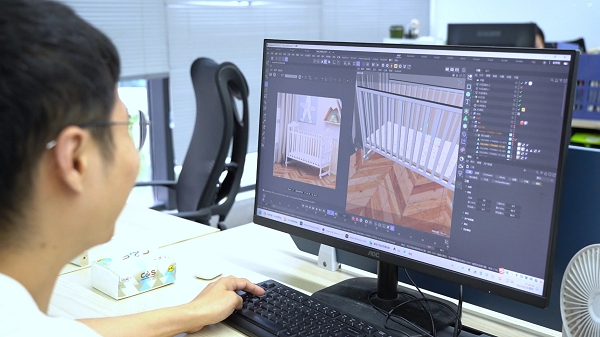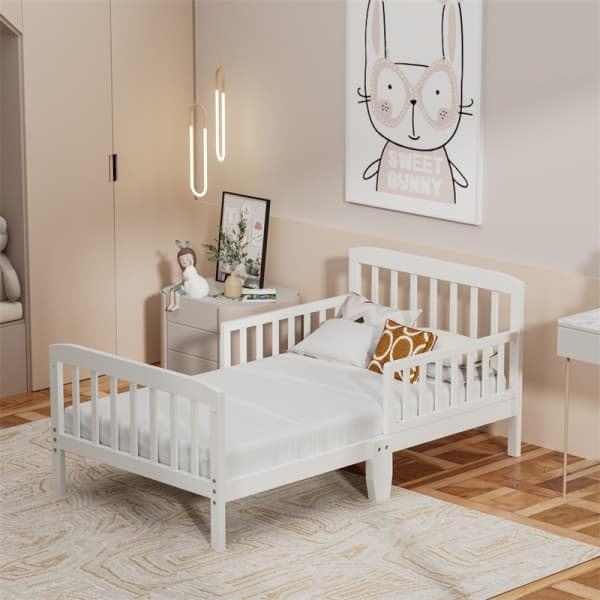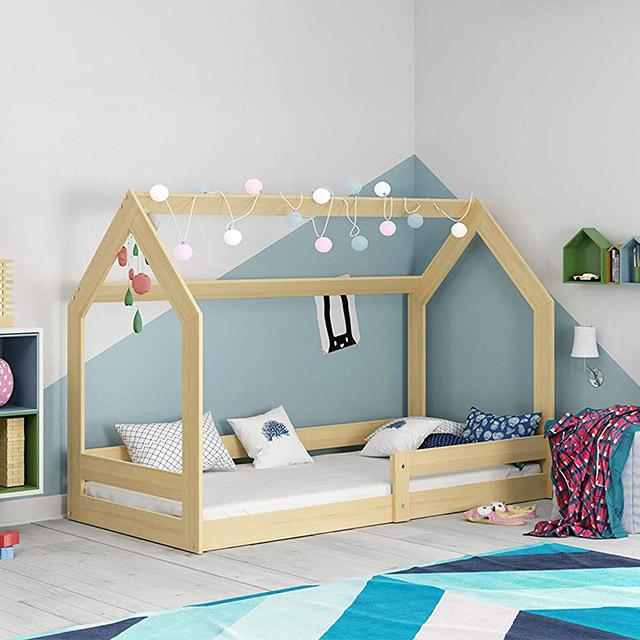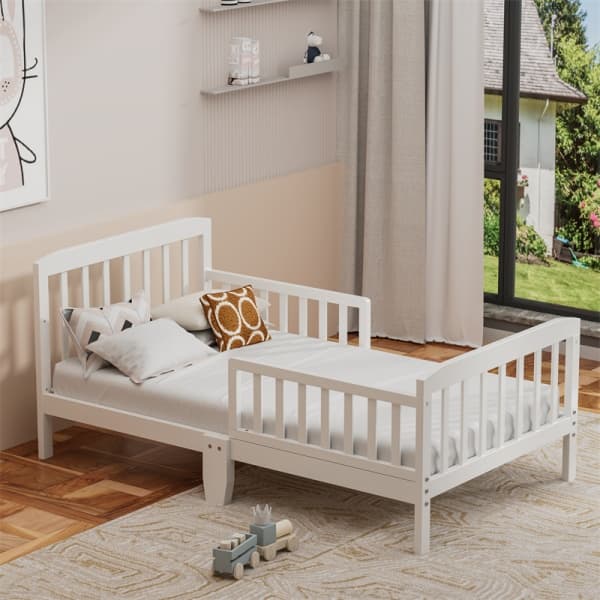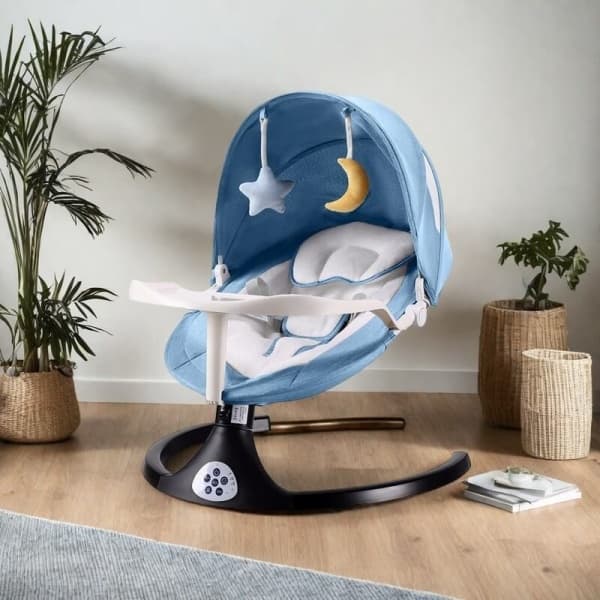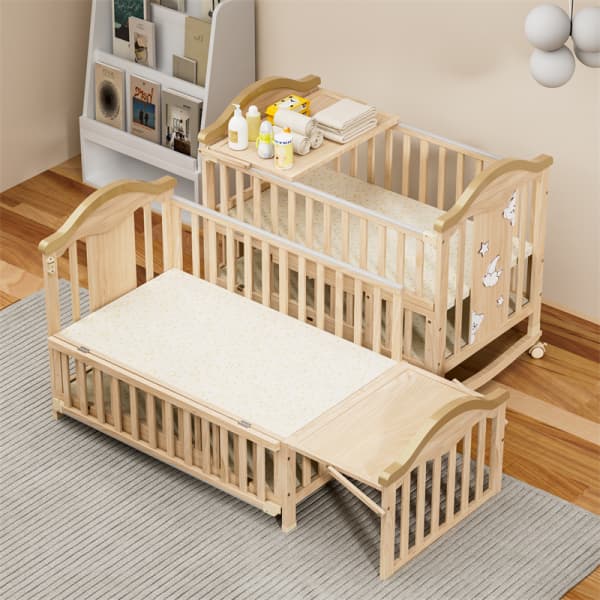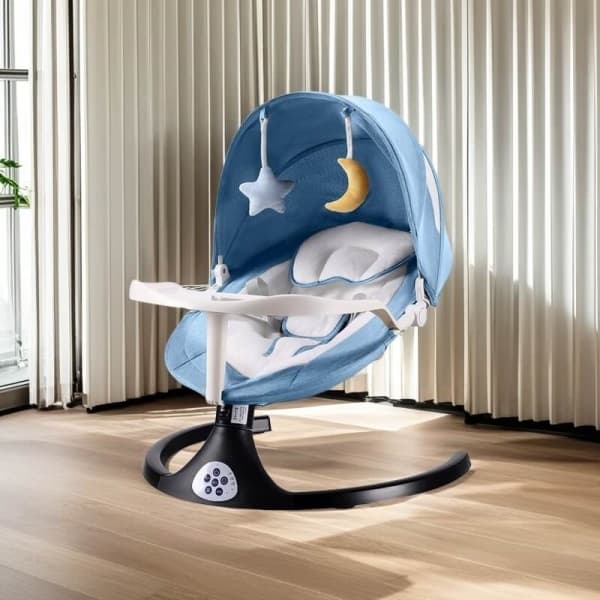For many new parents, co-sleeping with a baby is a convenient option for nighttime feeding and soothing crying babies. However, as babies grow, this sleeping method may be risky.
Global authoritative pediatric institutions and sleep experts generally recommend that you gradually transition to independent crib sleep as early as possible. This transition is not only about safety, but also affects the quality of family life and the long-term development of children.
Yes, it’s arduous. But with patience, strategy, and a little science, you can manage this transition without feeling guilty or losing sleep. This article will introduce the experts’ views on co-sleeping, the timing, and the method strategies for transition.
Why Transition to a Crib? What Experts Say
Pediatricians and sleep specialists emphasize three core reasons why the transition from co-sleeping to a crib is necessary: safety, developmental readiness, and family well-being.
First, safety is non-negotiable. The American Academy of Pediatrics (AAP) has long advised against bed-sharing due to the heightened risk of Sudden Infant Death Syndrome (SIDS) and accidental suffocation.
The soft material of adult mattresses, heavy bedding, and even the unconscious movements of parents turning over can put pressure on the infant’s respiratory system. The infant’s neck muscles are not fully developed, and once the face sinks into a soft surface, the ability to adjust the head position autonomously is extremely limited.
Dr. Rachel Moon, a leading SIDS researcher, explains, “Cribs are designed to meet strict safety standards that adult beds simply can’t replicate. Transitioning reduces risks exponentially once a baby starts rolling or pulling up.”
Second, developmental milestones signal readiness. Around 4–6 months, babies begin to self-soothe—a skill critical for uninterrupted sleep. Child psychologist Linda Palmer emphasized: “The crib is the child’s first independent space, which helps the baby establish circadian rhythm and self-soothing ability.”
Children who rely on their parents to sleep together for a long time are prone to form “sleep associations”, closely binding falling asleep to adult company. This dependence may lead to frequent night awakenings and even affect the habit of falling asleep independently during school age.
Finally, parent well-being is critical and often overlooked. A follow-up study of 5,000 families found that 68% of parents who continued to sleep in the same bed reported long-term sleep interruptions, anxiety, or marital tension.
Parents’ slight movements, such as turning over and coughing, can disturb the baby’s light sleep, and the baby’s frequent night wakings also react to the adult sleep cycle, forming a vicious cycle.
The physical separation of independent cribs can not only ensure the safety of babies but also provide parents with space to restore their energy, indirectly improving daytime parenting.
When to Transition from Co-Sleeping to Crib
The American Academy of Pediatrics (AAP) recommends that the first 6 months after birth is the golden period for safe transition, and 4-6 months is considered the best starting period by most sleep experts.
During this stage, the baby’s sensory cognition, motor ability, and sleep patterns have undergone qualitative changes. Scientifically grasping these signals can lay a dual physiological and psychological foundation for separate bed training.
When the baby begins to turn over continuously (4-5 months old) or adjusts the sleeping position independently, the safety risks of adult beds will increase exponentially. At the same time, babies after 4 months of age gradually establish circadian rhythms and can sleep continuously for 4-6 hours at night, which is a natural opportunity to introduce an independent sleeping environment.
The above time points are only from an objective and scientific point of view that it is easier to make the transition successful before the risks double. But as we said before, child experts do not approve of co-sleeping. If it goes well, you can even try to transition to a crib at any time (for example, one week after the baby is born, or one month later).
Decoding Your Baby’s Sleep Associations
Sleep associations are the invisible threads that tie your baby to specific conditions they need to fall asleep. Co-sleeping often creates powerful associations: the warmth of your body, the sound of your heartbeat, or the comfort of nursing on demand.
Babies are sensory learners. A study in Infant Behavior and Development found that infants rely heavily on environmental triggers, like scent and touch, to feel secure.
When transitioning, the goal isn’t to erase these associations but to replicate them in crib-friendly ways. For example, if your baby falls asleep while nursing, gradually replace feeding with a calming pre-sleep ritual like rocking or humming.
Replacing Co-Sleeping Triggers
- Touch → Pressure: Swaddle younger babies or use a weighted sleep sack (approved for their age) to mimic the feeling of being held.
- Your Scent → Familiar Objects: Sleep with your baby’s crib sheet or stuff a clean T-shirt of yours into a breathable mesh crib liner (safely secured).
- Movement → Sound: If your baby nods off during car rides or babywearing, try a white noise machine with rhythmic “shushing” or heartbeat sounds.
The Role of Consistency
It takes 3–7 days for babies to adapt to new sleep associations, according to pediatricians at Stanford Children’s Health. Resist the urge to revert to old habits during night wakings. Instead, offer low-key reassurance—a quick back rub or whispered affirmation—to reinforce that the crib is a safe space.
Preparing the Crib Environment
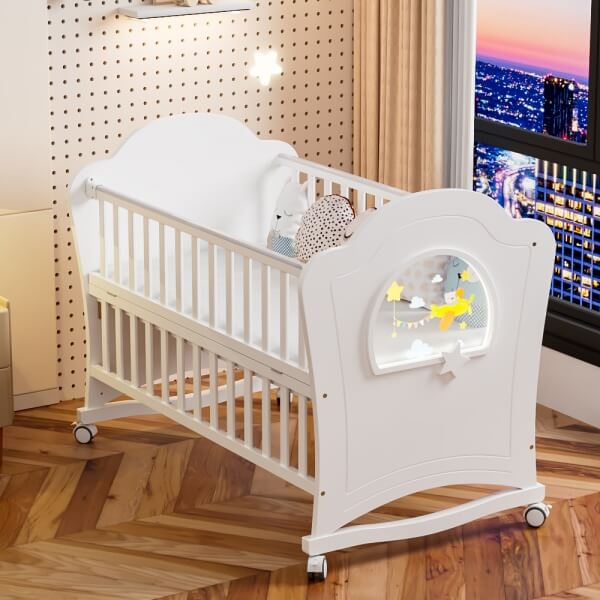
Transitioning your baby to the crib isn’t just about moving them to a new space—it’s about transforming that space into a sanctuary they want to sleep in. Start by addressing the sensory elements that made co-sleeping comforting, then layer in cues that signal safety and relaxation.
Before focusing on coziness, ensure the crib meets AAP safety standards. This means a firm, snug-fitting mattress (no gaps larger than two fingers), a tightly fitted sheet, and absolutely no loose bedding, pillows, or stuffed animals for babies under 12 months.
Babies who co-sleep are used to the warmth of your body and the rhythm of your breathing. Replicate these sensations in the crib:
- Temperature Control: Use a wearable blanket or sleep sack to mimic the feeling of being swaddled close to you. Opt for breathable fabrics like cotton to prevent overheating.
- Scent Anchors: Sleep with your baby’s crib sheet for a night or two before the transition. Your scent lingering on the fabric can ease anxiety during those first solo nights.
- Soundscapes: If your baby dozed off to the sound of your voice or heartbeat, try a white noise machine set to a low, rhythmic hum.
Make the crib a positive space before sleep time. Spend 10–15 minutes daily playing in the nursery with the crib door down. Place your baby inside with their favorite toy, singing or reading nearby. This builds a “happy place” association, so the crib isn’t just a site for separation.
Establishing a Consistent Bedtime Routine
A multinational study found that children with consistent bedtime routines fall asleep faster and sleep more deeply. Why? Repetition lowers cortisol (the stress hormone) and boosts melatonin production. Think of it as a lullaby for their nervous system.
A predictable bedtime routine is the glue that holds this transition together. It acts as a series of cues, signaling to your baby’s brain that sleep is coming, no matter where they’re lying.
The key is consistency, not complexity. Aim for a 20–30 minute ritual that’s calm, connective, and crib-centric.
Building Your Routine
Wind-Down Time (10 minutes): Dim the lights and lower voices 30 minutes before bed. Skip screens—blue light disrupts melatonin.
Connection Rituals (10 minutes): Move to the nursery for a short board book or lullaby. Keep it simple—the same 2–3 songs or stories nightly.
The Final Goodnight (5 minutes): Place your baby in the crib drowsy but awake. Use a signature phrase like, “I love you. It’s time to rest,” paired with a gentle touch on their tummy. Exit the room promptly to avoid overstimulation.
Adapting for Age and Temperament
Newborns: Focus on feeding and swaddling in the nursery to build location-based sleep cues.
Older Babies: Add a “goodnight” ritual to objects (e.g., “Say night-night to teddy!”) to reinforce routines.
Strong-Willed Toddlers: Use a visual schedule with pictures (bath, book, bed) to empower their sense of control.
Use a Gradual Transition Approach

The transition from co-sleeping to an independent crib is essentially a reorganization of the baby’s secure attachment relationship. A forced “one-size-fits-all” strategy of separating beds may cause intense resistance, while a gradual transition through the design of “step-by-step separation” allows babies to gradually adapt to the dual physical and psychological independence without being deprived of a sense of security.
Pediatric sleep specialist Dr. Harvey Karp, creator of the “5 S’s” method, recommends starting with just one nap a day in the crib. “Success with naps builds confidence for nighttime,” he explains. “Babies learn that the crib isn’t a place of separation but a spot where good sleep happens.”
For nighttime, consider a phased approach.
Step 1: From “Zero Distance” To “Within Reach”
Use a bedside crib, remove one side of the guardrail, and splice it side by side with the big bed. For the first 3-5 days, parents can continue to sleep in the big bed with their baby, but adjust the baby’s head position to the side close to the crib.
When breastfeeding or comforting at night, deliberately complete feeding, burping, and other actions in the crib to let the bed be contaminated with the baby’s familiar smell.
Step 2: Physical Separation
When the baby is familiar with the appearance and smell of the crib next to it:
Phase 1 (2-3 nights): Let the baby sleep in the crib, and the parents gently place their hands on their chest or back.
Phase 2 (3-4 nights): Change to only touch the baby’s arm or shoulder with your fingertips.
Phase 3 (3 nights): Keep your hands suspended 5 cm above the baby’s body to provide temperature perception but not actual touch.
Step 3: From Tactile Dependence to Visual Security
After removing physical contact, use visual connection to fill the sense of security gap. For example, hang a photo of the parents or a comfort doll wearing the mother’s pajamas at the end of the baby’s crib. Parents sit in a visible position next to the crib (such as a stool at the end of the bed), keep quiet, and accompany the baby, but do not interact.
Step 4: Responsive Exit
When the baby can fall asleep autonomously when the parents retreat to the door, start practicing the progressive response method:
Wait 3 minutes before responding to the first crying, soothe with words, but do not enter the room (such as “Mom is here”).
If crying continues, wait 5 minutes for the second time, enter the room, pat for 10 seconds, and leave.
Extend the waiting time by 2 minutes each time, but the total response in a single night should not exceed 3 times.
This method is not to let the crying go, but through a predictable response pattern, let the baby understand “parents are always there, but I need to try to calm myself down.”
Managing Night Wakings and Separation Anxiety
Night wakings are inevitable during this transition, but how you respond can mean the difference between a temporary setback and a prolonged struggle. Separation anxiety, which peaks around 8–10 months and again at 18 months, complicates matters further. Your baby isn’t being manipulative; they’re seeking reassurance in a time of change.
Responding to Night Wakings
When your baby cries out, pause before rushing in. A 2021 study in Sleep Medicine found that 70% of babies self-settle within 5–10 minutes of waking.
Set a timer for 5 minutes (adjust based on your comfort level) to allow them space to practice self-soothing. If they continue crying, offer low-key comfort:
- Minimal Touch: Pat their back or stroke their hair, but avoid picking them up unless they’re inconsolable.
- Neutral Tone: Whisper a calming phrase like, “You’re safe. I’m here,” using the same words each time.
- Quick Exit: Once calm, leave the room promptly to avoid reigniting dependence on your presence.
Easing Separation Anxiety
For babies clinging fiercely to your presence, try the “fading” method endorsed by the American Academy of Sleep Medicine:
- Night 1–3: Sit in a chair directly next to the crib until they fall asleep.
- Night 4–6: Move the chair halfway to the door.
- Night 7+: Sit near the door, then outside with it slightly ajar.
This gradual retreat builds trust that you’re nearby, even when unseen. For toddlers, introduce a “magic blanket” or “protector” toy. One study in the Infant Mental Health Journal found that transitional objects reduce nighttime anxiety by 45% in children over 12 months.
Teething, illness, or developmental leaps (e.g., walking) can reignite clinginess. During these phases, offer extra daytime connection—think babywearing or extended storytime—to fill their emotional cup.
At night, stick to your routine but add a small concession, like holding their hand for 2 minutes before leaving.
Conclusion
Transitioning from co-sleeping to the crib is more than a change in sleeping arrangements—it’s a milestone in your child’s growth and a testament to your dedication as a parent.
While the path may feel winding, with moments of doubt and nights of trial, remember that every small step forward is a victory. If setbacks arise—whether due to teething, travel, or toddler defiance—meet them with grace. Return to your routine gently, trusting that consistency is your compass.
Recommended Related Articles:

